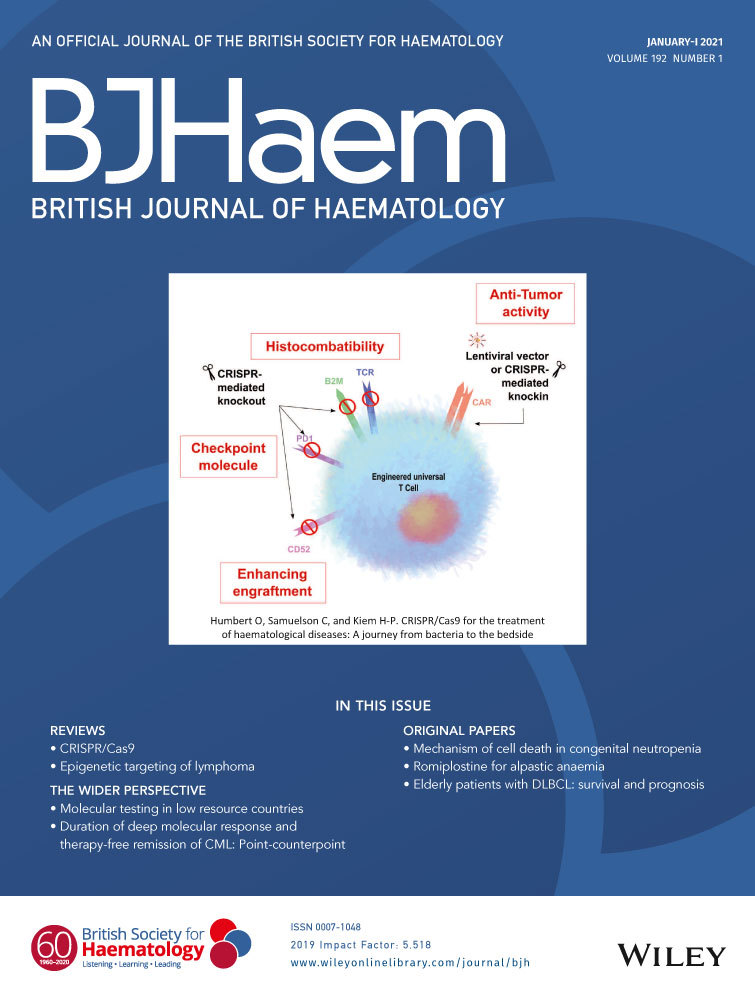Antiviral prophylaxis for hepatitis B carriers improves the prognosis of diffuse large B-cell lymphoma in Taiwan – a population-based study
Summary
The prevention of hepatitis B virus (HBV) reactivation during rituximab treatment for diffuse large B-cell lymphoma (DLBCL) is important in the HBV-endemic area. This population-based study examines the impact of antiviral prophylaxis for DLBCL patients with HBV infections. We identified 3702 adult patients with newly diagnosed DLBCL between 2011 and 2015 receiving R-CHOP, R-CVP, CHOP or CVP from the Taiwan Cancer Registry. We further stratified them into three groups: HBsAg-negative patients (HBV-negative, N = 2921), HBV carriers who received antiviral prophylaxis (HBV + Px, N = 711), and HBV carriers who did not receive antiviral prophylaxis (HBV + No Px, N = 70). HBV + Px patients were the youngest, and 69·4% received entecavir for antiviral prophylaxis. The median overall survival (mOS) of HBV-negative and HBV + Px patients was similar (74·23 months and not reached, respectively). However, the mOS of HBV + No Px patients was only 35·61 months (P = 0·0028 compared with HBV + Px patients), indicating that antiviral prophylaxis improves OS in HBsAg-positive DLBCL patients. The multivariate analysis showed that the HBV status and antiviral prophylaxis was an independent prognostic factor. In conclusion, our population-based study illustrates the importance of antiviral prophylaxis in HBsAg-positive DLBCL patients. Under antiviral prophylaxis, the survival of DLBCL patients with HBV infections was comparable to that of HBV-negative patients.
Conflicts of interest
Hsiao FY, Chen HM and Ko BS received a research grant sponsored by Roche Products Ltd. (Taiwan).




